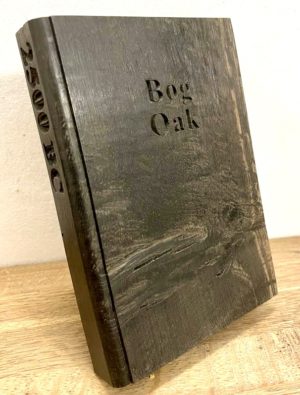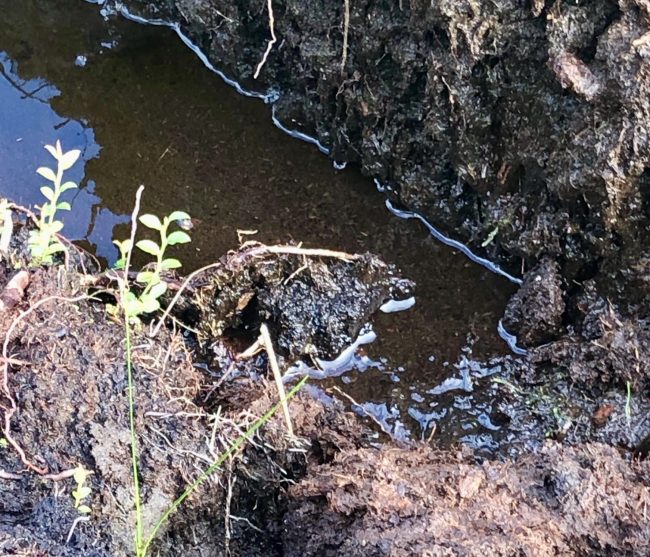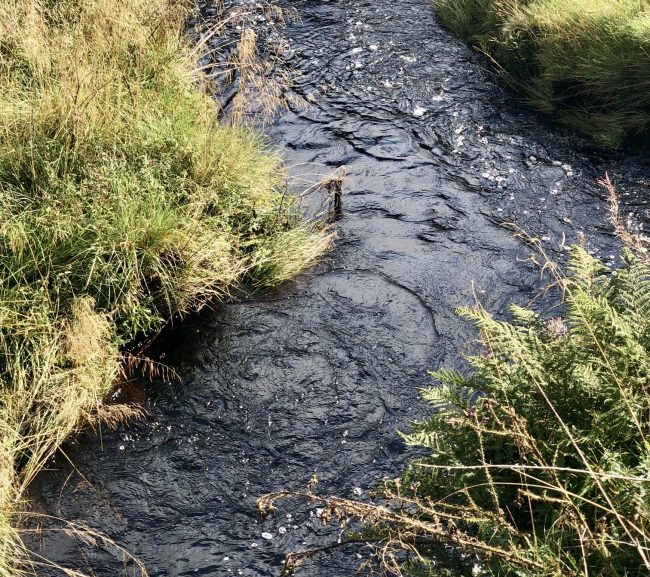Restoring peatland.

In recent times, peatlands and areas of blanket bog have been recognised as important parts of our landscape. Blanket bog is mostly found in wetter and more northern regions - in parts of Ireland and Scotland; in England a lot is to be found in Yorkshire.
Peatlands and bogs play an important part in controlling the run off of water from hillsides, plus they also represent an enormous store of ‘sequestered carbon’. The remains of plants (and animals) have been buried in wetlands but have not decomposed fully (usually due to the acidic conditions). Sometimes large chunks of trees are found in peat bogs, and occasionally even human remains (for example Tollund man) have been found.
Some of the peat deposits are incredibly thick and the material stored in them may be many thousands of years old. Moorland ‘management’ techniques have been implicated in the severe erosion of certain areas, and the peat (that has accumulated over thousands of years) is being washed away.

Water logged conditions are ideal for peat formation
The UK has lost many areas of wetland habitat in recent times. A research team lead by Dr Swindles (Leeds University) examined many peatlands and looked at the changes that have occurred over the last two millennia. They found that the majority of peatlands have become drier. This drying out changes the role of a peatland from carbon sink to carbon source; i.e. releasing carbon into the atmosphere - contributing to global warming and climate change. The streams and rivers that permeate these areas often turn a deep, rich brown as this organic material is washed out.

Stream flowing through peat moorland
Various efforts are being made to help stabilise these valuable ecosystems and a number of techniques to have been tried. At Fleet Moss, a North Yorkshire moor between Wharfedale and Wensleydale, the Yorkshire Peat Partnership project has been working to restore areas of degraded peatland by creating dams and reintroducing wildlife. The conservationists have been using grass seed to try and stabilise the peat, hoping that as it grows and extends its roots, it will stop the peat from being washed away while allowing bog plants and sphagnum to flourish. Sphagnum moss can hold 26 times its weight in water.
Their work is already bearing fruit,. Originally, the land was largely acres of heather, with little variety in terms of the animals and plants that had made a home there. But over time, owls, frogs, foxes and weasels have appeared. With time, the grass should stabilise the peat and allow bog plants to establish themselves.
However, it has not been an easy process. Whilst the scattering of grass seed has worked in some areas, this does not always work everywhere, particularly on exposed sites; seeds can be battered by rain and wind. Even at the height of summer, the weather on some of England’s highest terrain can be fierce, and scattering grass seeds on areas that are battered by wind and rain has proved to be problematic.
So now in some areas a hydroseeder is being used where grass colonisation has failed. This is where green sludge and the bioengineering company TerrAffix come in. TerrAffix uses a hydroseeder to spray the mix of brash (chopped heather), grass seeds, fertiliser and a special adhesive (or tackifier), to areas facing particular challenges. This equipment has been used to reseed prairies in the States, and can also be used on the steep slopes of motorways, It will be some time before it is known whether this technique is successful in boggy and peatland areas. If it does show signs of success then plugs of plants such as bog asphodel and sphagnum will be added, in the hope of recreating a more natural and diverse flora for the areas.
Further information on the restoration of peatlands can be found on Dr. Emma Shuttleworth's web pages and in articles such as this.
Featured image is a 'book' made from bog oak.
Comments are closed for this post.
